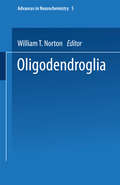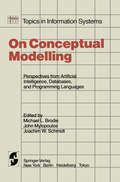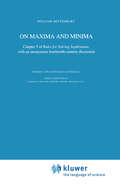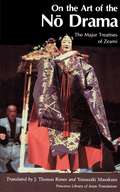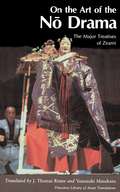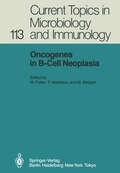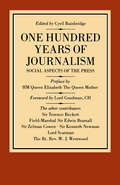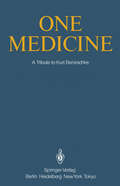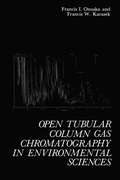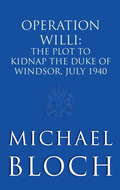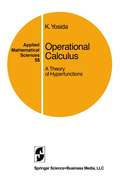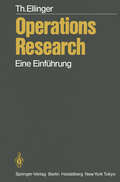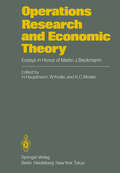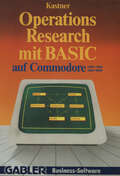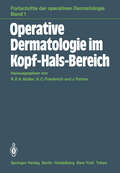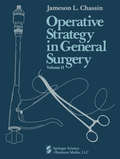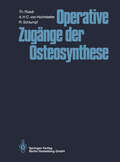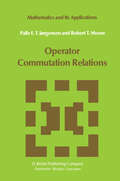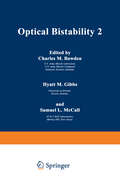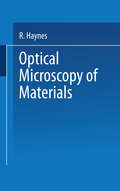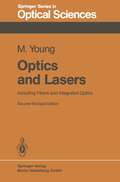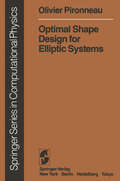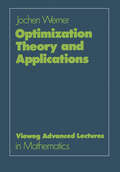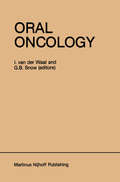- Table View
- List View
Ökologische Datensätze — Programme für AOS-Rechner und BASIC-Taschencomputer (Anwendung programmierbarer Taschenrechner #24)
by Michael MeyerIn einer Zeit, in der man den umweltschädigenden Einfluß unserer technologischen Gesell schaften immer deutlicher zu spüren bekommt, muß zwangsläufig die "Lehre vom Haus halt der Natur", also die Ökologie, an Bedeutung zunehmen. Daß diese Wissenschaft sich nicht nur um die Rettung der vom Aussterben bedrohten Tiere und Pflanzen bemüht, sondern auch die in ihrer Existenzgrundlage sich selbst gefährdende Menschheit in ihre Betrachtung einbezieht, ist eine Tatsache, die bisher leider nicht in weiten Kreisen der Be völkerung bewußt gemacht wurde. Man kann wohl getrost behaupten, ökologische For schung sei neben einer ausgewogenen Politik und neben akzeptablen Konzepten der Öko nomie für den Fortbestand der Menschheit notwendig. Der Ökologe stützt sich bei seinen Untersuchungen auf nur verbal beschreibbare Beob achtungen (welche allerdings oft durch Fotos oder Zeichnungen dokumentarisch festge halten werden können) und auf (mehr oder weniger) objektive Meßdaten. Liegen nach der Untersuchung letztere vor, müssen diese in irgendeiner Weise in logischen Zusammen hang gebracht werden, sie müssen also verarbeitet werden. Bei der Auswahl von nume rischen Verfahren muß der Ökologe allerdings größtenteils auf fachfremde Literatur zu rückgreifen, d. h. Werke der mathematischen, naturwissenschaftlichen, sozialwissenschaft lichen und medizinischen Statistik sowie der praktischen Mathematik für technisch-natur wissenschaftliche Disziplinen. Entsprechend muß er sich Taschenrechnerprogramme für die Datenauswertung aus Büchern anderer Fachdisziplinen zusammensuchen. Für eine Wissenschaft, die - wie oben angedeutet - so bedeutungsvoll wurde, ist es allmählich an der Zeit, daß sie ihre eigene Literatur zu diesem Thema erhält.
Oligodendroglia (Advances in Neurochemistry #5)
by William NortonThis series has addressed a constituency of scientists possessing biochemical background with the goal of providing them with specialized reviews of neu robiological interest. Since its initiation, neurochemistry and neuroscience have come of age, and the editors initiate with this volume the concept of a central theme. It is planned that each subsequent volume will also be topical. We note with sadness the passing of Dr. Henry Mahler who served as an advisory editor since the initiation of this series. He played a major role in building the bridge between biochemistry and neurochemistry and will be missed. Weare pleased to welcome two new editors, Drs. William Norton and Bruce McEwen. B. W. Agranoff M. H. Aprison vii FOREWORD Oligodendroglia constitute one of the three principal cell types of the central nervous system. These cells, together with their elaborated membranes, account for at least 25 percent of the dry mass of an adult rat brain and an even greater percentage of the central nervous system of larger animals.
On Conceptual Modelling: Perspectives from Artificial Intelligence, Databases, and Programming Languages (Topics in Information Systems)
by M. L. Brodie J. Mylopoulos J. W. SchmidtThe growing demand for systems of ever-increasing complexity and precision has stimulated the need for higher level concepts, tools, and techniques in every area of Computer Science. Some of these areas, in particular Artificial Intelligence, Databases, and Programming Lan guages, are attempting to meet this demand by defining a new, more abstract level of system description. We call this new level conceptual in recognition of its basic conceptual nature. In Artificial Intelligence, the problem of designing an expert system is seen primarily as a problem of building a knowledge base that repre sents knowledge about an enterprise. Consequently, Knowledge Repre sentation is viewed as a central issue in Artificial Intelligence research. Database design methodologies developed during the last five years are almost unanimous in offering semantic data models in terms of which the designer directly and naturally models an enterprise before proceed ing to a detailed logical and physical database design. In Programming Languages, different forms of abstraction which allow implementation independent specifications of data, functions, and control have been a major research theme for a decade. To emphasize the common goals of these three research efforts, we call this new activity conceptual modelling.
On Maxima and Minima: Chapter 5 of Rules for Solving Sophismata, with an anonymous fourteenth-century discussion (Synthese Historical Library #26)
by William HeytesburyThis book began with my edition of the anonymous treatise. A translation and notes seemed essential if the material of the treatise was to be understood. It then seemed that Chapter 5 of Heytesbury's Rules for Solving Sophismata, on which the treatise was based, should also be included. My translation of the Heytesbury treatise is based on a fifteenth-century edition, supplemented by readings from a few of the better manuscripts. (A critical edition from all the manuscripts, of which Chapter 5 will be mine, is now in progress under the supervision of Paul Spade, but only a few insignificant changes in the translation should be necessitated by the completed edition. ) An examination of related materials seemed reasonable, and these included Heytesbury's commentator Gaetano, as well as a chapter from a treatise by Johannes Venator (in an edition in progress provided by Francesco del Punta). It seemed unnecessary to publish Gaetano's and Venator's related works in this volume, but all their departures from Heytesbury and the anonymous treatise are noted here. I have not examined other works in the tradition in any detail. I owe a great deal to my teacher, Norman Kretzmann, not only as regards the edition and translations, but also as regards the notes, study and introduction. The referees of the typescript (to me unknown) made unusually thorough criticisms and suggestions to which I have paid close attention. The book is far better for my having done so.
On the Art of the No Drama: The Major Treatises of Zeami
by Masakazu Yamazaki J. Thomas RimerThis annotated translation is the first systematic rendering into any Western language of the nine major treatises on the art of the Japanese No theater by Zeami Motokivo (1363-1443). Zeami, who transformed the No from a country entertainment into a vehicle for profound theatrical and philosophical experience, was a brilliant actor himself, and his treatises touch on every aspect of the theater of his time. His theories, mixing philosophical and practical insights, often seem strikingly contemporary. Since their discovery early in this century. these secret treatises have been considered among the most valuable and representative documents in the history of Japanese aesthetics. They discuss subjects from the art of the playwright to the reciprocal nature of the relationship between performer and audience.
On the Art of the No Drama: The Major Treatises of Zeami (Princeton Library of Asian Translations #158)
by J. Thomas Rimer Masakazu YamazakiThis annotated translation is the first systematic rendering into any Western language of the nine major treatises on the art of the Japanese No theater by Zeami Motokivo (1363-1443). Zeami, who transformed the No from a country entertainment into a vehicle for profound theatrical and philosophical experience, was a brilliant actor himself, and his treatises touch on every aspect of the theater of his time. His theories, mixing philosophical and practical insights, often seem strikingly contemporary. Since their discovery early in this century. these secret treatises have been considered among the most valuable and representative documents in the history of Japanese aesthetics. They discuss subjects from the art of the playwright to the reciprocal nature of the relationship between performer and audience.
Oncogenes in B-Cell Neoplasia: Workshop at the National Cancer Institute, National Institutes of Health, Bethesda, MD, USA, March 5–7, 1984 (Current Topics in Microbiology and Immunology #113)
by M. Potter F. Melchers M. WeigertOne Medicine: A Tribute to Kurt Benirschke, Director Center for Reproduction of Endangered Species Zoological Society of San Diego and Professor of Pathology and Reproductive Medicine University of California San Diego from his Students and Colleagues
by O. A. Ryder M. L. ByrdThere is a saying "he is a person who can charm the birds from the trees." This might well be applied to Kurt Benirschke. Indeed, it describes both his warm personality and his intimate interaction with nature. He might be considered a modern adept of the Greek and Roman Stoic school of philosophy, which taught an understanding of man as integrated into nature in its totality. The right way to live is according to nature, with nature as part of it. This at the same time means humanity, and Kurt Benirschke impresses us not only as an outstanding scientist, but also as a humanist who has had a lifelong love affair with nature. The foundation of Springer-Verlag New York in 1964 offered a great opportunity for getting together with eminent authors in the United States. Kurt Benirschke was one of them, and his book Pathology of the Placenta was highly acclaimed all over the world. My attention was first called to him by my dear friend Dr. Ernst Uhlinger, then a pathologist in Zurich. With a sharp and critical eye, he followed the international literature on pathology and discovered "the genius of Kurt Benirschke." Our first encounters led to a relationship of trust which in turn grew into friendship. I soon learned to esteem the special qualities of the man and the scientist; in fact they cannot be separated.
Operation Willi: The Plot to Kidnap the Duke of Windsor, July 1940
by Michael BlochIn this fascinating piece of historical detective work - the result of several years' research and the interrogation of numerous surviving witnesses - Michael Bloch has penetrated one of the great mysteries of the Second World War: the plot to bring the Duke of Windsor under German power on the eve of the Battle of Britain, a plot which the Duke himself is sometimes said to have given encouragement. A work of historical sleuthing in the classic tradition, combining powerful writing with scrupulous scholarship.
Operational Calculus: A Theory of Hyperfunctions (Applied Mathematical Sciences #55)
by Kosaku YosidaIn the end of the last century, Oliver Heaviside inaugurated an operational calculus in connection with his researches in electromagnetic theory. In his operational calculus, the operator of differentiation was denoted by the symbol "p". The explanation of this operator p as given by him was difficult to understand and to use, and the range of the valid ity of his calculus remains unclear still now, although it was widely noticed that his calculus gives correct results in general. In the 1930s, Gustav Doetsch and many other mathematicians began to strive for the mathematical foundation of Heaviside's operational calculus by virtue of the Laplace transform -pt e f(t)dt. ( However, the use of such integrals naturally confronts restrictions con cerning the growth behavior of the numerical function f(t) as t ~ ~. At about the midcentury, Jan Mikusinski invented the theory of con volution quotients, based upon the Titchmarsh convolution theorem: If f(t) and get) are continuous functions defined on [O,~) such that the convolution f~ f(t-u)g(u)du =0, then either f(t) =0 or get) =0 must hold. The convolution quotients include the operator of differentiation "s" and related operators. Mikusinski's operational calculus gives a satisfactory basis of Heaviside's operational calculus; it can be applied successfully to linear ordinary differential equations with constant coefficients as well as to the telegraph equation which includes both the wave and heat equa tions with constant coefficients.
Operations Research and Economic Theory: Essays in Honor of Martin J. Beckmann
by H. Hauptmann W. Krelle Karl MoslerMartin Beckmann is going to celebrate his sixtieth birthday. This is almost unbelievable considering the vitality, ingenuity, and activity which he continues to show as he always did. It is an honor able and pleasant duty for the whole economics community to show hirn the respect, gratitude, and affection which he deserves. Thus, those' who have contributed to this festschrift may be thought of as a dele gation from a much larger community in which all of us are joined; the editors in particular feel deeply connected with and enriched by the personality and scientific work of Martin Beckmann. Martin Beckmann is one of those rare scholars who are not narrow minded specialists in one field; he has been active in many areas of economics and operations research which rapidly developed since World War 11, and he has contributed original and fruitful ideas in almost all of them. The variety of topics treated in this volume aims to re flect the impressive width of his scientific interests.
Operations Research mit BASIC auf Commodore 2000/3000, 4000/8000: 12 vollständige Programme
by Gustav KastnerOperative Dermatologie im Kopf-Hals-Bereich (Fortschritte der operativen und onkologischen Dermatologie #1)
by R. P. A. Müller H. C. Friederich J. PetresOperative Strategy in General Surgery. An Expositive Atlas: Volume 2
by Jameson L. ChassinThis surgical atlas should be of great value to all clinical surgeons, both those in training and those in surgical practice, and Dr. Chassin is superbly qualified to author this work. During more than three decades as a mem ber of the faculty of the New York University School of Medicine, he has taught countless residents many aspects of the art of surgical tech nique. One measure of Dr. Chassin's unusual teaching ability is that he is both Professor of Clinical Surgery at New York University and Director of Surgery at Booth Memorial Hospital, where our fourth-year surgical residents have rotated regularly for the past 12 years. Booth Memorial is the only hospital outside the New York University Medical Center to which New York University residents rotate. This simple fact well under lines Dr. Chassin's remarkable capability for teaching. When a surgical complication develops after an operation, two or three possibilities should be considered. First, of course, was the diagnosis correct? If it was, then the cause of the complication is usually either an inadequate operative technique or a flawed concept underlying the selection of the operative procedure. When the surgical technique seems faultless, a postoperative complication would strongly indicate that the concept was erroneous, albeit cherished perhaps for decades. Unlike any other atlas on operative technique, this book specifically discusses the conceptual basis of the operation as well as the strategy that will help the surgeon avoid common pitfalls. The operative technique is then described step by step.
Operator Commutation Relations: Commutation Relations for Operators, Semigroups, and Resolvents with Applications to Mathematical Physics and Representations of Lie Groups (Mathematics and Its Applications #14)
by P.E.T. Jørgensen R.T. MooreIn his Retiring Presidential address, delivered before the Annual Meeting of The American Mathematical Society on December, 1948, the late Professor Einar Hille spoke on his recent results on the Lie theory of semigroups of linear transformations, . . • "So far only commutative operators have been considered and the product law . . . is the simplest possible. The non-commutative case has resisted numerous attacks in the past and it is only a few months ago that any headway was made with this problem. I shall have the pleasure of outlining the new theory here; it is a blend of the classical theory of Lie groups with the recent theory of one-parameter semigroups. " The list of references in the subsequent publication of Hille's address (Bull. Amer. Math •. Soc. 56 (1950)) includes pioneering papers of I. E. Segal, I. M. Gelfand, and K. Yosida. In the following three decades the subject grew tremendously in vitality, incorporating a number of different fields of mathematical analysis. Early papers of V. Bargmann, I. E. Segal, L. G~ding, Harish-Chandra, I. M. Singer, R. Langlands, B. Konstant, and E. Nelson developed the theoretical basis for later work in a variety of different applications: Mathematical physics, astronomy, partial differential equations, operator algebras, dynamical systems, geometry, and, most recently, stochastic filtering theory. As it turned out, of course, the Lie groups, rather than the semigroups, provided the focus of attention.
Optical Bistability 2
by Charles M. Bowden Hyatt M. Gibbs Samuel L. McCallThis volume is a collection of experimental and theoretical papers presented at the international "Topical Meeting on Optical Bistability", held at the University of Rochester, June 15-17, 1983, sponsored jointly by the Air Force Office of Scientific Re search; the Army Research Office; and the Optical Society of America. The Conference, which had 150 attendees, overlapped (on June 15) with the Fifth Rochester Conference on Coherence and Quantum Optics with two joint sessions. Some of the topics cover ed in this volume are also treated io the Proceedings of that Conference. Since the last international conference on Optical Bistability, held in Asheville, North Carolina, June 3-5, 1980, there have been new and important fundamental advances in the field. This is borne out in papers in this volume dealing with optical chaos and period doubling bifurcations leading to chaos as well as the report of results of an experiment using a very simple system exhibiting ab sorptive optical bistability in a ring cavity using optically pump ed sodium atoms, which was successfully analyzed quantitatively by a simple theory. Other advances discussed here include the ob servation of optical bistability due to the effect of radiation pressure on one mirror of a fabry-Perot cavity. and the prediction of mirrorless intrinsic opittal bistability due to the local field correction incorporated into the Maxwell-Bloch formulation. Advances in optical bistability in semiconductors relate closer to actual device applications.
Optical Microscopy of Materials
by Raymond HaynesSince Sorby published his observations on the structures of steels in 1863, the optical microscope has become one of the most widely used and versatile instruments for examining the structures of engineering materials. Moreover, to examine the diverse range of materials encountered, it must be used in both the reflected-light and transmitted-light forms, and with polarized light. It is complementary to, but not superseded by, the wide range of electron-optical instruments that are now used. Despite its extensive use, it has been described as the most misused, abused, and misunderstood of scientific instruments, for it will produce an image of a sort no matter how badly it is used. To use it effectively, even in its simplest applications, a knowledge of the simple theory of the microscope is necessary, for the theory shows and explains how it should be used. Thus my aim has been to give a simple and, where possible, quantitative account of both the theory and the use of the microscope, including the various special techniques for which it can be used. But, no matter how effectively the microscope is used, if the specimen is inadequately prepared the results of examination will be of doubtful value.
Optics and Lasers: Including Fibers and Integrated Optics (Springer Series in Optical Sciences #5)
by M. YoungSince this book was first published in 1977, the major advances in optics have been the maturing of optical communications and the development of in tegrated optics. When I was offered the opportunity to prepare a revised edi tion, I decided to add chapters on these disciplines to the original work. This book, which was begun long before I joined the National Bureau of Stand ards, remains a private venture, written, so to speak, in my basement; there is no official connection with the National Bureau of Standards. I have also taken the opportunity to make some corrections and to add several short sections within the body of the earlier text. The most important of these changes include a discussion of group velocity, phase velocity and group index of refraction to anticipate the need for these concepts in Chap. 9; revision of the section on coherent-optical processing, including what is essen tially an optical derivation of the Fourier series; addition of the converging beam optical processor; and addition of a section on laser safety. The bulk of the new material comprises three chapters. The first is Chap. 9, "Optical Waveguides". In this chapter, I develop optical waveguide theory primarily on the basis of ray optics and interference in planar waveguides.
Optimal Shape Design for Elliptic Systems (Scientific Computation)
by O. PironneauThe study of optimal shape design can be arrived at by asking the following question: "What is the best shape for a physical system?" This book is an applications-oriented study of such physical systems; in particular, those which can be described by an elliptic partial differential equation and where the shape is found by the minimum of a single criterion function. There are many problems of this type in high-technology industries. In fact, most numerical simulations of physical systems are solved not to gain better understanding of the phenomena but to obtain better control and design. Problems of this type are described in Chapter 2. Traditionally, optimal shape design has been treated as a branch of the calculus of variations and more specifically of optimal control. This subject interfaces with no less than four fields: optimization, optimal control, partial differential equations (PDEs), and their numerical solutions-this is the most difficult aspect of the subject. Each of these fields is reviewed briefly: PDEs (Chapter 1), optimization (Chapter 4), optimal control (Chapter 5), and numerical methods (Chapters 1 and 4).
Oral Oncology (Developments in Oncology #20)
by G. B. Snow I. WaalA multidisciplinary approach to the problems related to the diagnosis, treat ment, and rehabilitation of patients with oral cancer and precancer is reflected in the various specialties of the authors who contributed to this book. Today, patients with tumors of the oral cavity are dealt with preferably by a team of specialists who have been properly trained in the field of oncology, who have learned to appreciate each other's knowledge and experience, and who are able to operate as an integrated team. This book is intended for use by every physician and dentist involved in the diagnosis and management of oral cancer. It is 'presented in such a way as to be useful for both the physician in training as well as the specialist in the field of head and neck oncology. The text concentrates on the common as well as the unusual aspects. For those who look for more detailed information, an exten sive list of references is provided at the end of each chapter. It should be emphasized that treatment policies may vary not only in differ ent parts of the world, but also from institution to institution, depending on the expertise of the members of the oncologic team and the available facilities. I. VAN DER W AAL AND G. B. SNOW, editors.

